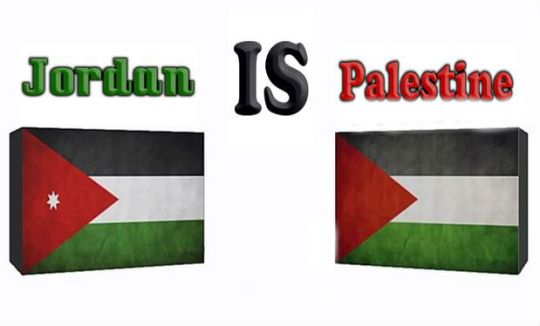ירדן היא פלשתין ~ Jordan is Palestinian ~ Mudar Zahran *Video*
In 1919 A historic meeting took place in Aqaba between Chaim Weizmann (Jews) and Emir Feisal (Arabs), one of the heads of the Arab rebellion against the Turks, and a British ally.
The two leaders discussed cooperation between the Jewish and Arab national movements.
After a few meetings they signed “The Faisal-Weizmann Agreement” in the year 1919. The main points of this agreement included an Arab recognition of the Balfour Declaration and an obligation of the Jews to assist in the development of an Arab state. Feisal renounced the agreement after the Arab demand for independence wasn’t accepted and the #French and British received mandates over the area.
The two leaders discussed cooperation between the Jewish and Arab national movements.
After a few meetings they signed “The Faisal-Weizmann Agreement” in the year 1919. The main points of this agreement included an Arab recognition of the Balfour Declaration and an obligation of the Jews to assist in the development of an Arab state. Feisal renounced the agreement after the Arab demand for independence wasn’t accepted and the #French and British received mandates over the area.
The speaker is Mudar Zahran a “Palestinian” writer and academic from Jordan, who now resides in the U.K speaking about “Two States for Two Peoples on Two Banks of the Jordan River”.
The Balfour Declaration of 1917
The Balfour Declaration was made in November 1917. The Balfour Declaration led the Jewish community in Britain and America into believing that Great Britain would support the creation of a Jewish state in the Middle East.
On November 2nd 1917, Arthur James Balfour, the British Foreign Secretary of the time, wrote to Lord Rothschild. The Rothschild’s were considered by many Jews to be one the most influential of all Jewish families – they were certainly one of the wealthiest. Their influence in America was considered to be very important to the British government.
Balfour declared his support for the establishment of a Jewish homeland in the area known as Palestine – though there had to be safeguards for the “rights of non-Jewish communities in Palestine”. This communication was accepted by the Jewish community as Great Britain’s support for a Jewish homeland. Other nations that fought for the Allies offered their support for the declaration.
However, from a Palestinian Arab point of view, the same area had been promised to them for siding with the Allies in World War One and fighting against the Turks who were fighting on the side of the Germans.
Therefore, when Britain was given Palestine to govern as a League of Nation’s mandate at the end of the war, both the Jews and the Arabs believed that they had been betrayed as both believed that they had been promised the same piece of land. After 1918, politics in the Middle East was to become a lot more complicated as many Jews took the Balfour Declaration as read and emigrated to Palestine. The Arabs there saw the increasing number of Jews moving to the region as a threat to their way of life and problems quickly multiplied.

No comments:
Post a Comment